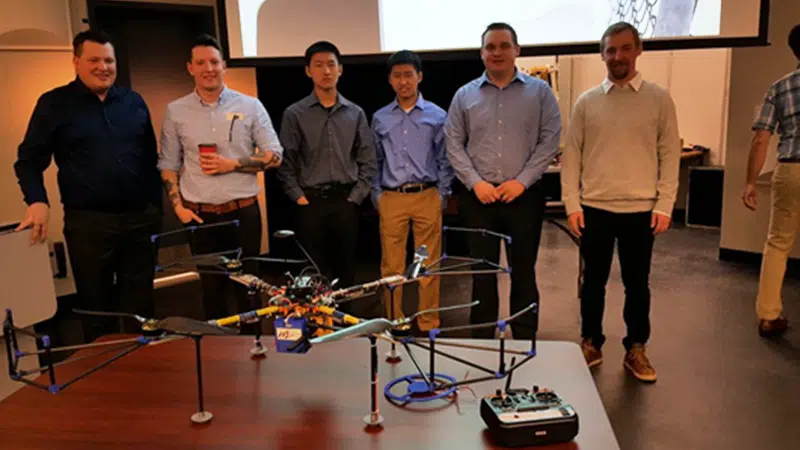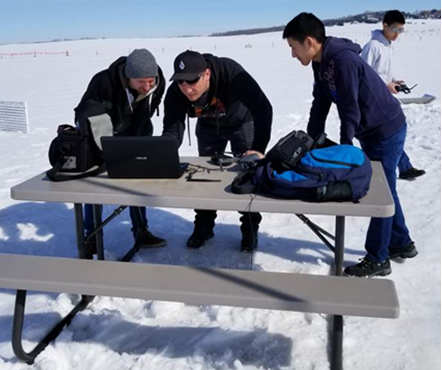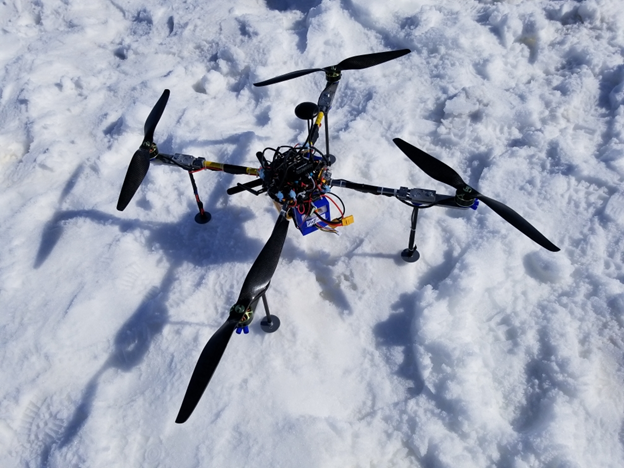
RDC grads recognized for creating flying Wi-Fi hotspot
A group of grads from Red Deer College was recently recognized for creating a flying Wi-Fi hotspot that allows people in remote locations to access a cell signal where there is none.
The team of six was named as a Capstone Project of the Year Award finalist by the Association of Science and Engineering Technology Professionals of Alberta (ASET).
Cellular coverage outside urban areas in Alberta can be intermittent, especially where terrain is rough or forested, ASET notes. Existing solutions include constructing additional cell towers, using satellite phones, or driving or hiking to higher elevations to connect with a cell signal.
The RDC team equipped a small drone with specialized radio equipment to enhance cell service reception. Capable of autonomous flight, the repeater drone can be rapidly deployed in the event of an emergency. It can reach an altitude of up to 200 feet and project a Wi-Fi signal over a wide area, allowing calls to be made and texts to be sent. Taking off and landing on its own, it recharges its battery on the landing pad.




